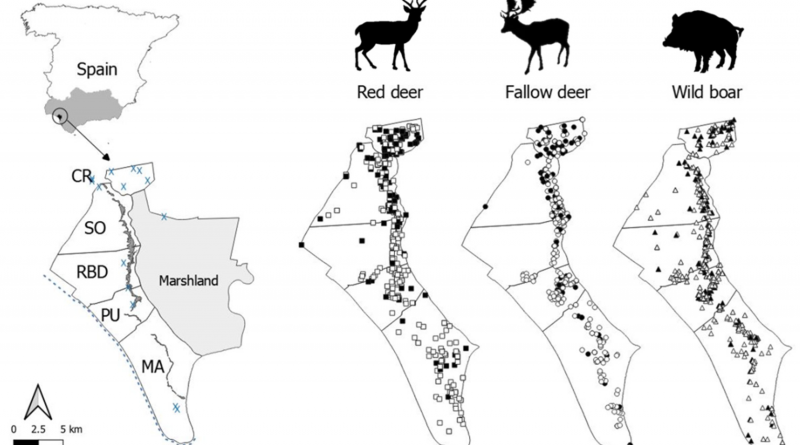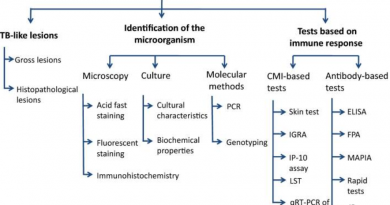Long-Term Determinants of the Seroprevalence of Toxoplasma gondii in a Wild Ungulate Community
Abstract
Toxoplasma gondii is an obligate intracellular protozoan which infects warm-blooded vertebrates, including humans, worldwide. In the present study, the epidemiology of T. gondii was studied in the wild ungulate host community (wild boar, red deer, and fallow deer) of Doñana National Park (DNP, south-western Spain) for 13 years (2005–2018). We assessed several variables which potentially operate in the medium and long-term (environmental features, population, and stochastic factors). Overall, the wild ungulate host community of DNP had high seroprevalence values of T. gondii (STG; % ± confidence interval (CI) 95%; wild boar (Sus scrofa) 39 ± 3.3, n = 698; red deer (Cervus elaphus) 30.7 ± 4.4, n = 423; fallow deer (Dama dama) 29.7 ± 4.2, n = 452). The complex interplay of hosts and ecological/epidemiological niches, together with the optimal climatic conditions for the survival of oocysts that converge in this area may favor the spread of the parasite in its host community. The temporal evolution of STG oscillated considerably, mostly in deer species. The relationships shown by statistical models indicated that several factors determined species patterns. Concomitance of effects among species, indicated that relevant drivers of risk operated at the community level. Our focus, addressing factors operating at broad temporal scale, allows showing their impacts on the epidemiology of T. gondii and its trends. This approach is key to understanding the epidemiology and ecology to T. gondii infection in wild host communities in a context where the decline in seroprevalence leads to loss of immunity in humans.




